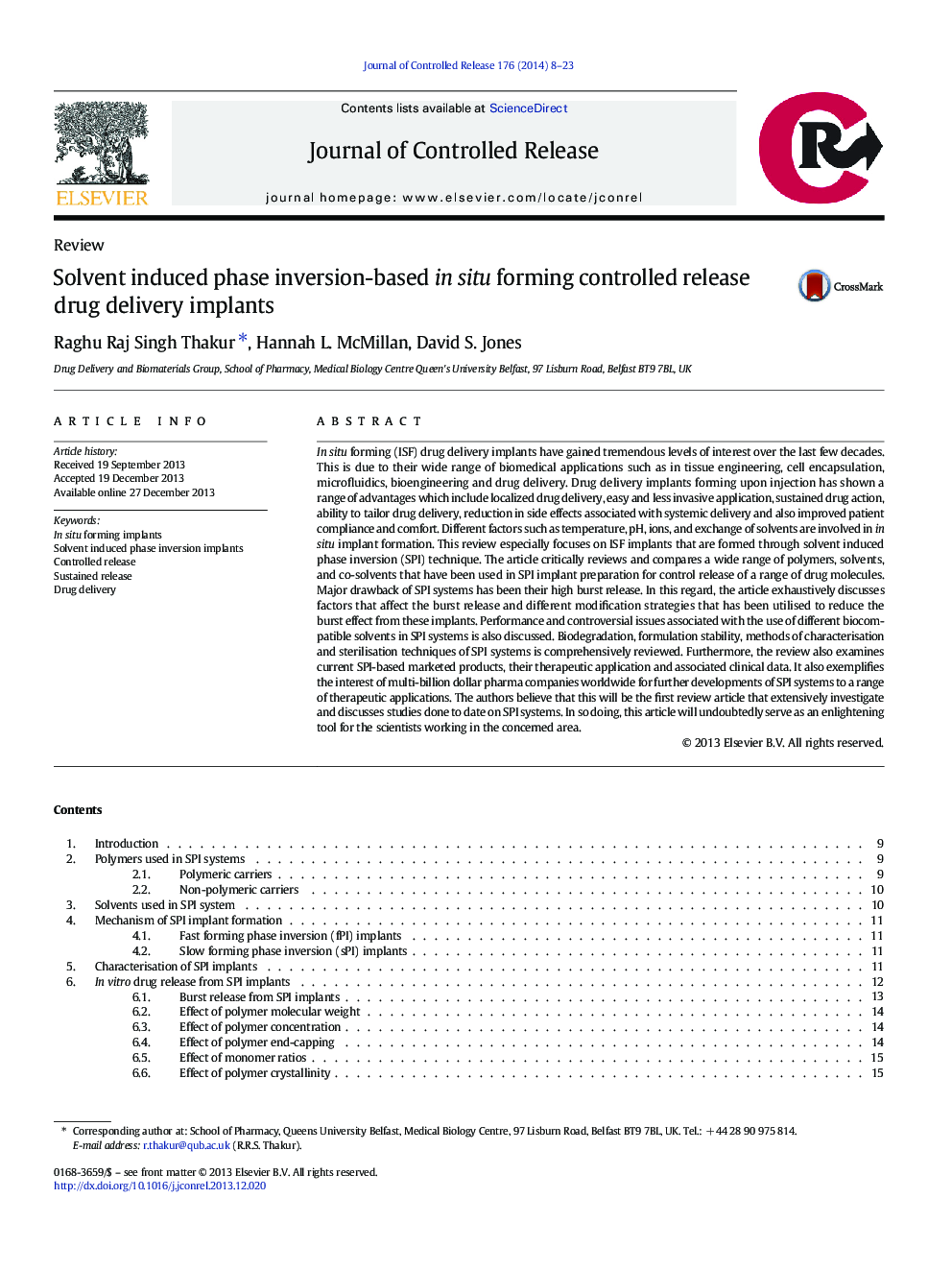| Article ID | Journal | Published Year | Pages | File Type |
|---|---|---|---|---|
| 1424116 | Journal of Controlled Release | 2014 | 16 Pages |
In situ forming (ISF) drug delivery implants have gained tremendous levels of interest over the last few decades. This is due to their wide range of biomedical applications such as in tissue engineering, cell encapsulation, microfluidics, bioengineering and drug delivery. Drug delivery implants forming upon injection has shown a range of advantages which include localized drug delivery, easy and less invasive application, sustained drug action, ability to tailor drug delivery, reduction in side effects associated with systemic delivery and also improved patient compliance and comfort. Different factors such as temperature, pH, ions, and exchange of solvents are involved in in situ implant formation. This review especially focuses on ISF implants that are formed through solvent induced phase inversion (SPI) technique. The article critically reviews and compares a wide range of polymers, solvents, and co-solvents that have been used in SPI implant preparation for control release of a range of drug molecules. Major drawback of SPI systems has been their high burst release. In this regard, the article exhaustively discusses factors that affect the burst release and different modification strategies that has been utilised to reduce the burst effect from these implants. Performance and controversial issues associated with the use of different biocompatible solvents in SPI systems is also discussed. Biodegradation, formulation stability, methods of characterisation and sterilisation techniques of SPI systems is comprehensively reviewed. Furthermore, the review also examines current SPI-based marketed products, their therapeutic application and associated clinical data. It also exemplifies the interest of multi-billion dollar pharma companies worldwide for further developments of SPI systems to a range of therapeutic applications. The authors believe that this will be the first review article that extensively investigate and discusses studies done to date on SPI systems. In so doing, this article will undoubtedly serve as an enlightening tool for the scientists working in the concerned area.
Graphical abstractSchematic representation of SPI implants formation, solvent exchange and drug release.Figure optionsDownload full-size imageDownload high-quality image (160 K)Download as PowerPoint slide
